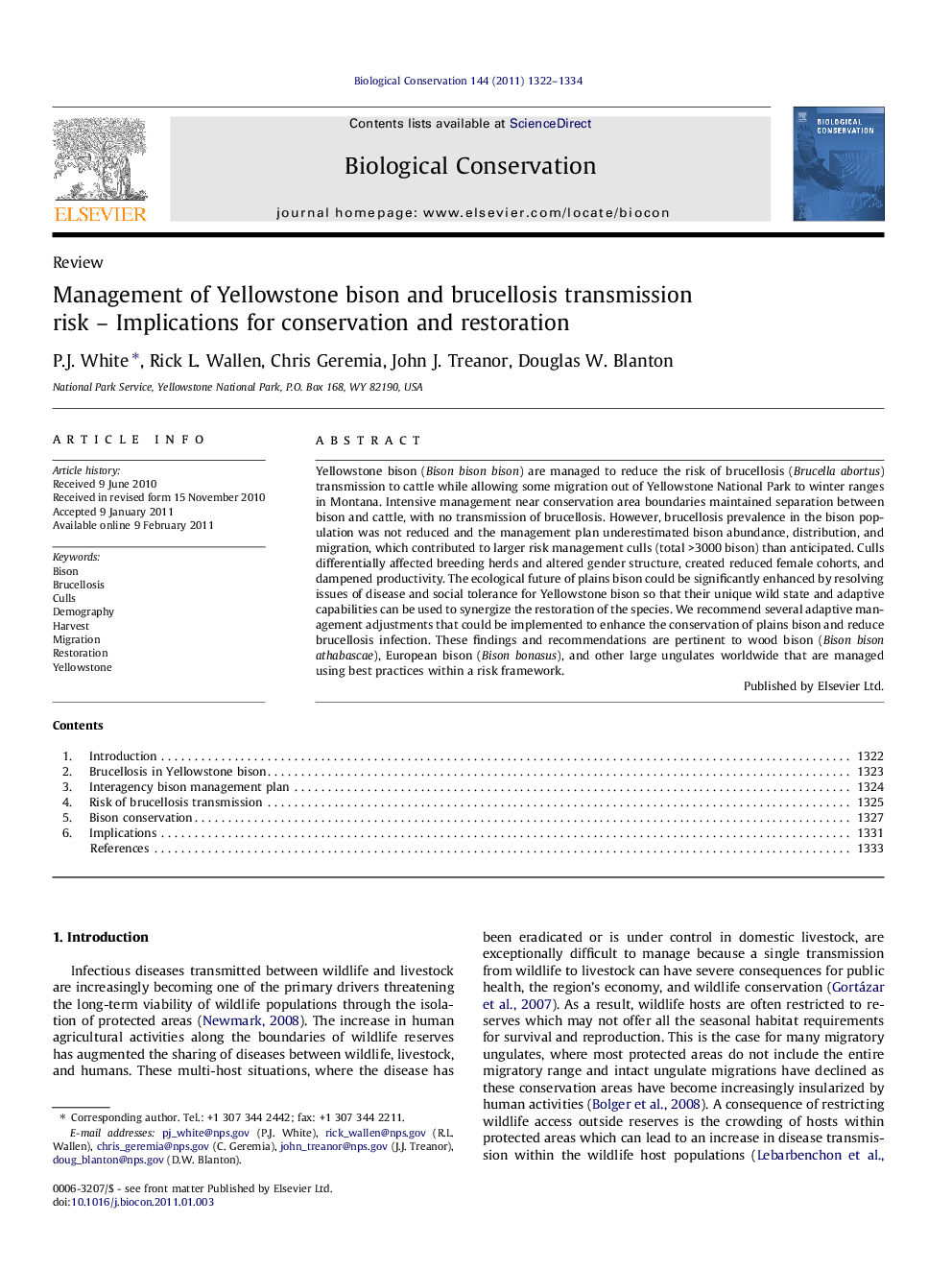| Article ID | Journal | Published Year | Pages | File Type |
|---|---|---|---|---|
| 4385978 | Biological Conservation | 2011 | 13 Pages |
Yellowstone bison (Bison bison bison) are managed to reduce the risk of brucellosis (Brucella abortus) transmission to cattle while allowing some migration out of Yellowstone National Park to winter ranges in Montana. Intensive management near conservation area boundaries maintained separation between bison and cattle, with no transmission of brucellosis. However, brucellosis prevalence in the bison population was not reduced and the management plan underestimated bison abundance, distribution, and migration, which contributed to larger risk management culls (total >3000 bison) than anticipated. Culls differentially affected breeding herds and altered gender structure, created reduced female cohorts, and dampened productivity. The ecological future of plains bison could be significantly enhanced by resolving issues of disease and social tolerance for Yellowstone bison so that their unique wild state and adaptive capabilities can be used to synergize the restoration of the species. We recommend several adaptive management adjustments that could be implemented to enhance the conservation of plains bison and reduce brucellosis infection. These findings and recommendations are pertinent to wood bison (Bison bison athabascae), European bison (Bison bonasus), and other large ungulates worldwide that are managed using best practices within a risk framework.
